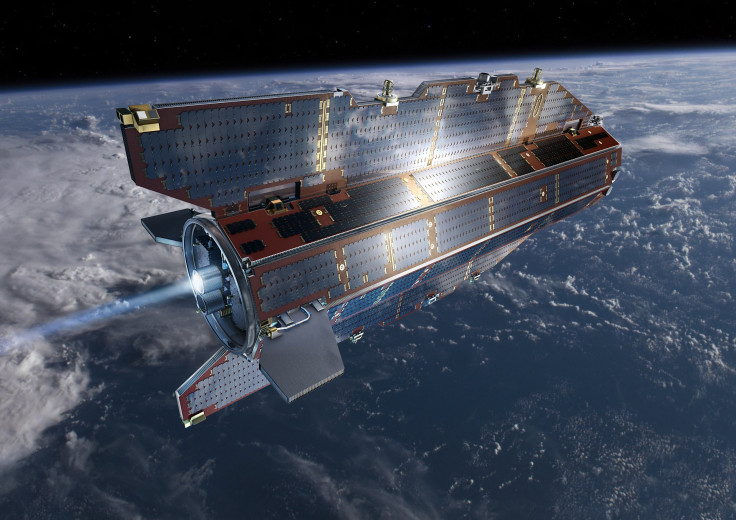UPDATE: Satellite GOCE Crashes Back To Earth On Sunday, Better Chance Of Winning Lotto Then Getting Hit With Debris, Says ESA
Update 9:18 p.m. EST: GOCE, the European Space Agency's gravity-mapping satellite, plummeted through Earth's atmosphere, around 7:00 p.m. EST, and disintegrated, NBC News reported, adding there were no immediate reported sightings of the satellite's re-entry.
Update 4 p.m. EST: CNN reports the satellite is expected to make its re-entry around 7 p.m. EST, but the exact crash location is still unknown.
Original story:
The European Space Agency, ESA, is carefully monitoring the re-entry of its Gravity field and steady-state Ocean Circulation Explorer (GOCE), satellite with a planned crash for Sunday. The agency expects the satellite to crash into Earth sometime between 1:30 and 7:30 p.m. EST, reports the Associated Press.

As the ESA tracks GOCE's re-entry, there is little chance of debris hitting anyone. The AP reports the GOCE satellite will most likely crash into either the ocean or the polar regions. According to the ESA, "The spacecraft is now at an altitude of just 133km, with the decay rate around 1.5 km per hour (and increasing quickly)." ESA has also added the uninhabited areas of Australia as another possible re-entry point.
On Friday, Heiner Klinkrad, head of the ESA's Space Debris Office at the European Space Operations Center, discussed the forecast and the possibility of any debris hitting people or a populated area. In the blog post, Klinkrad said, "The risk to the population on ground will be minute. Statistically speaking, it is 250,000 times more probable to win the jackpot in the German Lotto than to get hit by a GOCE fragment." The certainty is due to the orbit data, eliminating the possibility of re-entry above Europe, and the likelihood that most of the satellite fragments will burn up upon re-entry.
GOCE was launched in 2009 to study the Earth's gravitational field and was dubbed the "Ferrari of space" due to its sleek design, notes ESA. The satellite created a "high-resolution map of the boundary between Earth’s crust and mantle – called the Moho," and its mission ended in October after running out of fuel. ESA ground control is still in contact with the satellite and the Inter-Agency Space Debris Coordination Committee.
© Copyright IBTimes 2024. All rights reserved.












